Keeping Artwork Safe in Storage and on Display
When thinking about framing and displaying artwork, your choice of media will pretty much determine your options.
Displaying your Work

Because Acrylic Paint is the most robust media, there are a greater number of display options. Acrylic does not necessarily need to be protected in any way so unglazed frames, floating frames, unframed box canvases or free-standing works directly on wood, board or other surfaces are among the options. Acrylic does not even necessarily need to be varnished although varnishes are available that can protect the paint from UV light and dirt penetrating the surface but the most common use of Acrylic Varnish is simply to alter the surface sheen.
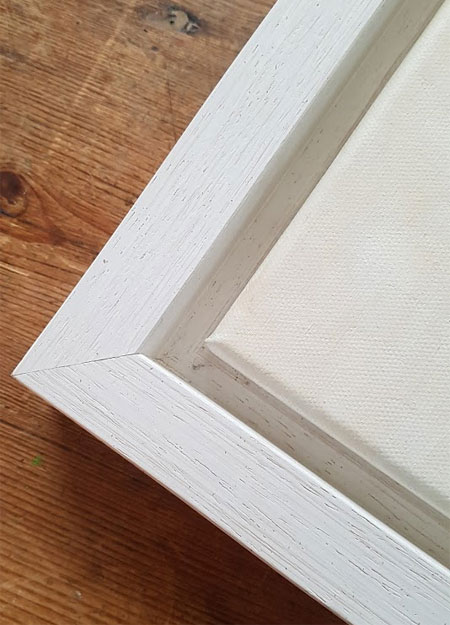
A Floating Frame is where the canvas is set in a slightly bigger frame without glazing Oil, too, can be placed in unglazed and floating frames or be left unframed although varnish will certainly help to protect it. The important thing to note when varnishing Oil, though, is to leave at least 3 months between finishing the painting and applying the varnish. This is because oil dries by a chemical reaction over a very long period and, although the surface film may have dried, the underlying paint will still be wet. Sealing it before it is thoroughly dry, will cause damage in the long term.

Using a soft Synthetic Brush to apply varnish to an Oil Painting Glazed frames are often used but do remember that many ‘off the peg’ frames will not have a recess deep enough to accommodate even a standard edge canvas and certainly not a deep edge one and additional depth would need to be allowed if you wanted a slip. A slip is a slim moulding that keeps the painting surface away from the glass and gives a more professional finish to the frame. Therefore, glazed framing would be better suited to Oil Paintings on panel or canvas board which are thinner than stretched canvas. If you did want to frame stretched canvas in a glazed frame, be aware that this will add greatly to the cost.
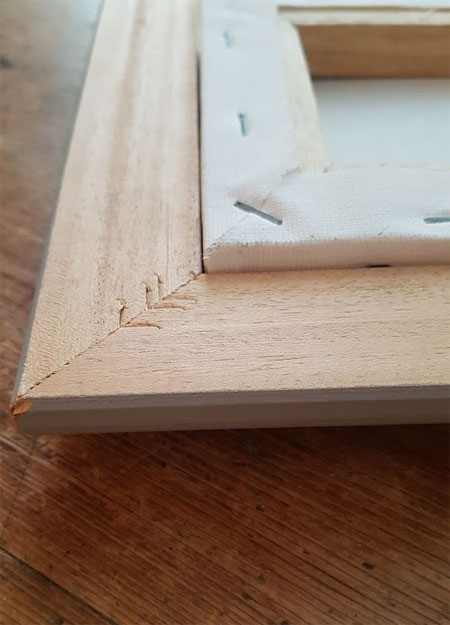
Even standard canvases with a depth of 20mm will prove too deep for most ‘off the peg’ ready made frames

If you wish to keep framing costs down and use ready made frames, you may wish to think about working on Canvas Board or Canvas Sheets that can be easily accommodated.
With Watercolours, glazed framing is the normal practice. As this paint type is prone to fading over time, framing behind a UV filtering glass is highly recommended but, even with the correct framing glass, watercolours should still be hung away from direct sunlight. Watercolour Varnishes are available but it is not really advisable as the varnish can easily penetrate the paper and become inseparable from the paint so, if the varnish becomes discoloured, it is impossible to remove.
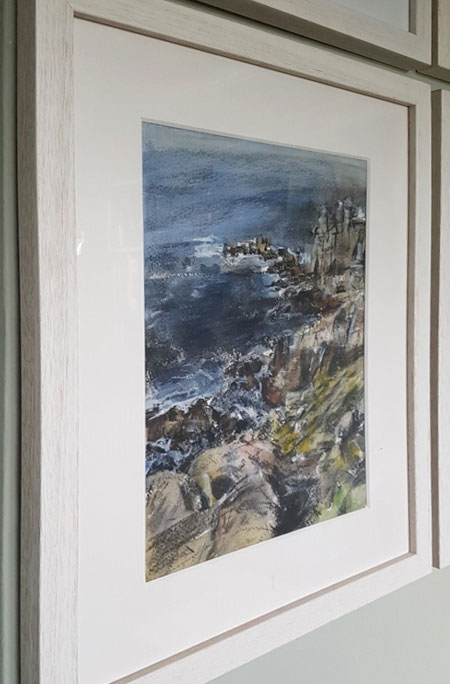
It is also advisable to frame pastel paintings behind glass. Fixatives are only designed to hold loose material in place and, without glass, the pastel can still be rubbed or scuffed off and it will be impossible to separate any dirt that the surface accumulates over time from the pastel material. Alternatively, you could use the 'steam' method as used by Degas. Allowing steam to waft over a pastel surface, sets the pigment into a 'paste' which makes it more stable.

A Pastel Fixative
This is the same for charcoal and graphite works on paper although it has become common for very large works on paper in charcoal, pencil and pigment powders to not have any framing but be simply hung from clips or pegs. This looks great for an exhibition but you will have to keep visitors from touching the surface and think how you or anyone buying the work will display and protect the work in the long term. Framed Watercolours, Pastel Paintings and other works on paper will benefit from having a mount. A Mount – or mat – is simply a thick, acid-free card called mountboard cut to the same size as the frame with a bevel-edged aperture window cut into it around the artwork setting off the image and holding the painted surface away from the glass so that any condensation forming will not wet the paper surface and cause mould, mildew or other damage.

Mountboard is between 2mm and 5mm deep and stops the Artwork touching the glass
When planning your painting or drawing, it is useful to think about how you will display the work and plot out the image on the surface accordingly. For instance, if your work is to be framed and mounted, ensure that you leave enough surface area around the image to allow it to be fixed to the mount without losing any of the composition behind the mount. This can be achieved by painting a bleed area or masking off the surrounding area to keep it clean. Or, if you are painting a box canvas that will be displayed unframed, consider whether you are leaving the edges clean – in which case it may be worth masking them – or continuing your image onto the edges.
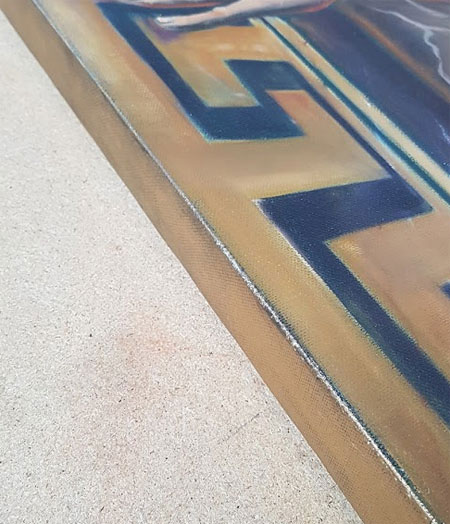
A Deep Edge Canvas allows a painting to be hung without a frame but consideration should be given to the edge to maximise the look of the Artwork.
If you are exhibiting work, it is worth thinking about insurance to protect your work from damage and loss. There are a number of companies and organisations who will not only offer annual policies but also one-off exhibition cover.
Storing your Work
There is no denying that works on paper benefit from being stored flat and the ideal solution is a plan chest. However, new plan chests are not cheap, are not small and second-hand ones – especially the beautiful looking antique ones that every artist lusts after – are getting very hard to come by! So, what are the alternatives?
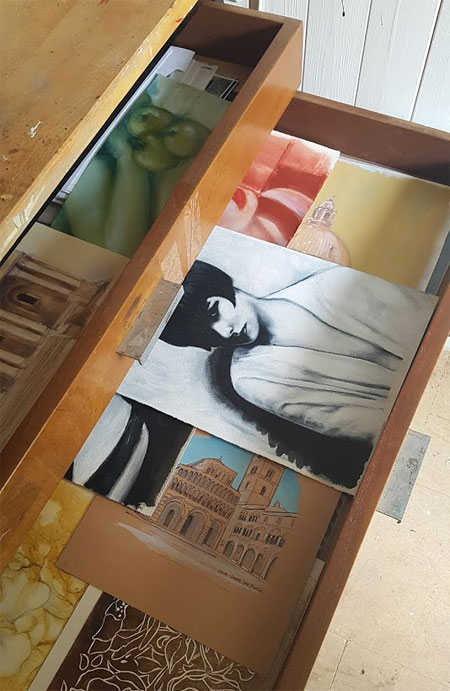
Artwork in a Plan Chest Portfolios and Port Cases are great for storage as well as transportation. A Portfolio has rings to accommodate plastic sleeves whilst a Port Case has straps to keep the artwork secure. Both are good especially if you have somewhere to lay them flat. Archival Boxes are brilliant for keeping works on paper safe from damage and the deeper boxes hold a considerable number of pieces. Glassine sheets interleaved between each piece will help to keep them clean and stop any loose material transferring to the back of another piece.
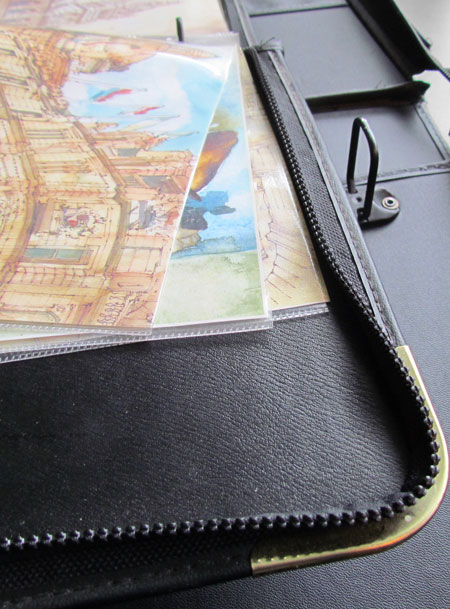
Artwork in a Portfolio
Modern Portfolios take plastic sleeves in which works on paper can be slotted to protect and present them
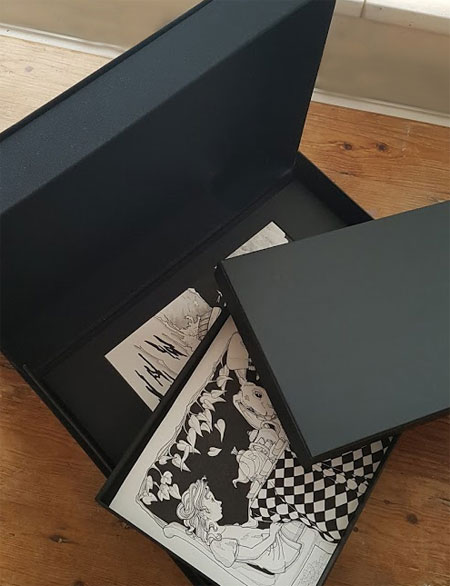
Archival Boxes for storing works on paper Archival Boxes can accommodate more loose artworks than portfolios and are great for storage and presentations
Ensure that the storage area is dry and there is a good air flow to avoid condensation building up. Even stored in drawers, paper can be very susceptible to damage from damp atmospheric conditions resulting in buckling, mildew or foxing. Don’t leave sticky-backed plastic or masking tape on paper for long periods as this will leave a sticky, discoloured mark long after the tape has lost its adhesion. Specialist archival tapes such as PH7-70 are recommended for hinge mounting although, if you can avoid using any tape whilst storing work, all the better.
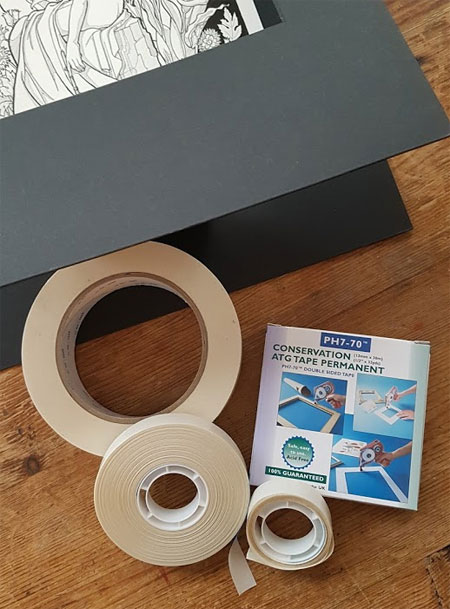
PH7-70 Archival Tape is perfect for framing and hinge mounting for display and presentation
Works in Oil are usually on board, panel or canvas which will support its own weight so the works can happily be stacked upright on the floor or on shelving depending on their size. Newly finished or newly varnished paintings should be held away from the next canvas so that the paint or varnish does not bond with the next canvas. Works in Oil that are on unstretched canvas sheets or canvas paper should be stored flat with glassine interleaves to avoid the transference of oil or colour.
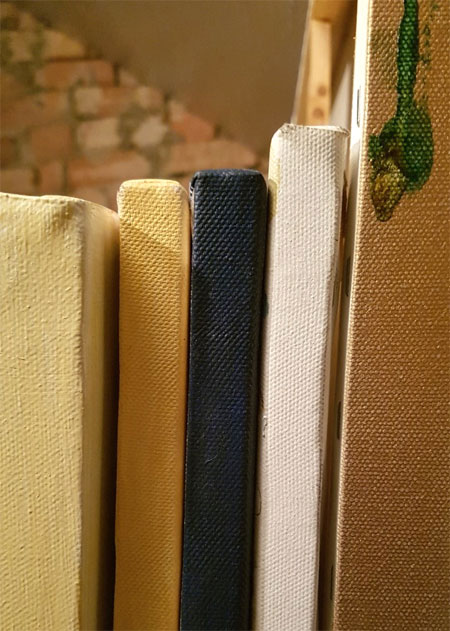
With Acrylic, storage will depend on the substrate. Works on stretched canvas, board or panel can be stored upright whilst works on paper, fabric or unstretched canvas can be stored flat or even in a roll. As Acrylic dries with a flexible film, paintings in Artist’s Acrylic can be rolled without cracking even if the paint is quite thick and, because it dries so quickly, the painting can be put away soon after completion. You may want to shuffle flat-stacked works occasionally to ensure that they have not stuck together and that impasto work has not been pressed down or in danger of being pressed into another work and unroll rolled work to make sure nothing untoward has happened.
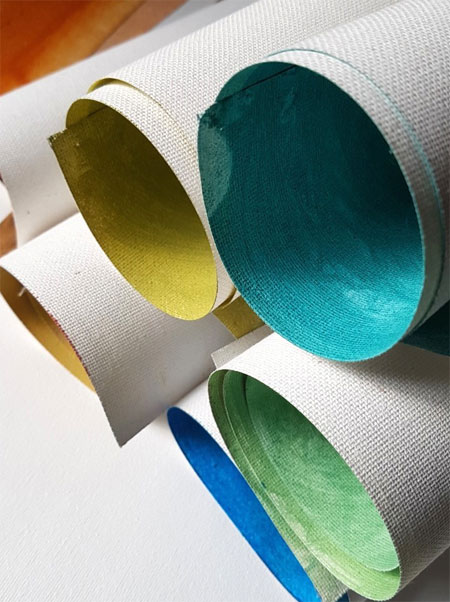
We would also recommend making a digital record of your work so that should your work be lost, damaged, stolen or even sold – could an Artist hope for such a thing! – you would still have a visual record of the work. Photographing every finished Artwork and saving it digitally with a date record will give you a lasting record, plot your development, allow you to share and show your work via the internet and help to fight against any copyright infringements.
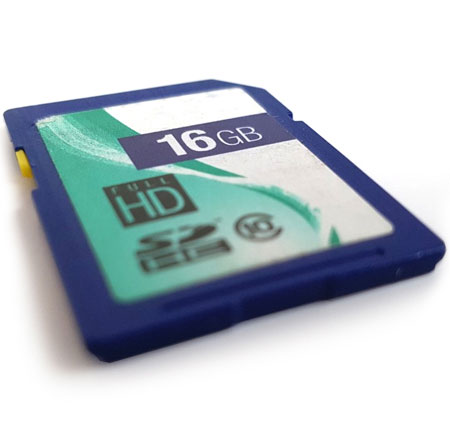
Copyright is given automatically when you create an original artwork without having to pay a fee or apply to a governing body and you are entitled to add the © mark to your work along with your name and year of creation. This should go some way to discouraging others from copying your design, distributing copies or posting the artwork online without your permission although it is not cast iron or internationally binding and it may still be difficult and costly to fight your case if someone does steal your image. To further protect your work, there are companies dedicated to Copyright Licensing who take a fee for handling all permissions to use your work and advise on dealing with copyright infringements.

